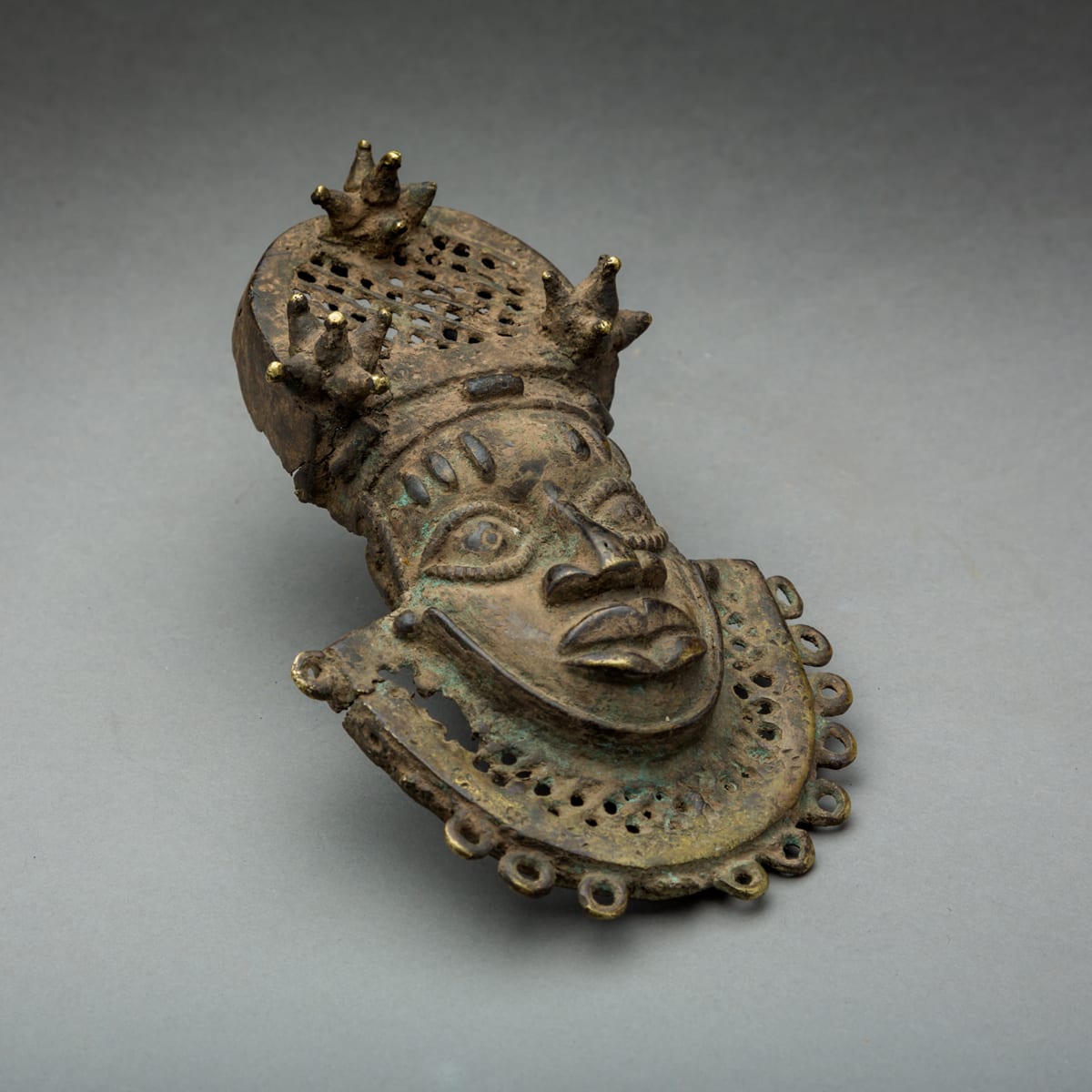Benin Brass Hip Ornament, 19th Century CE - 20th Century CE
Brass
height 19.1 cm
height 7 1/2 in
height 7 1/2 in
PF.6053
Benin hip ornaments in brass or ivory adhere to certain formal stylistic details, such as seen on this handsome mask. The finely carved face is a study in composure and...
Benin hip ornaments in brass or ivory adhere to certain formal stylistic details, such as seen on this handsome mask. The finely carved face is a study in composure and authority befitting a chief. The depiction of the Oba is adapted to the ovular shape of the ornament. The face of the king is typical of the Benin royal style. The large, composed eyes are represented here with incised circles for the pupils and lines on the eyelids for lashes. The wide flat nose and broad lips are also typical of such images. His headdress is composed of an openwork grid pattern embellished with star-shaped clusters of coral beads. A wide decorative collar surrounds the face filled with a similar grid design and bordered by a series of loops that might have once held further adornment. On the forehead are two groups of three short vertical lines on either side of a central broad band representing keloid scarification known as ikharo (meaning “tribal marks”). All these attributes are associated with hip ornaments worn by chiefs. During important ceremonies chiefs and titleholders wear the ornament on the left hip covering the closure of their wrapped skirts. They are symbols of power, wealth and a testimony to the artistic skills of Benin artists. Both the inherent value of the material and the skilled labor involved in producing such a work suggest this hip ornament was the treasured possession of a member of the royal elite. Perhaps this hip ornament was the Oba’s own; surely it is fit for a king.



